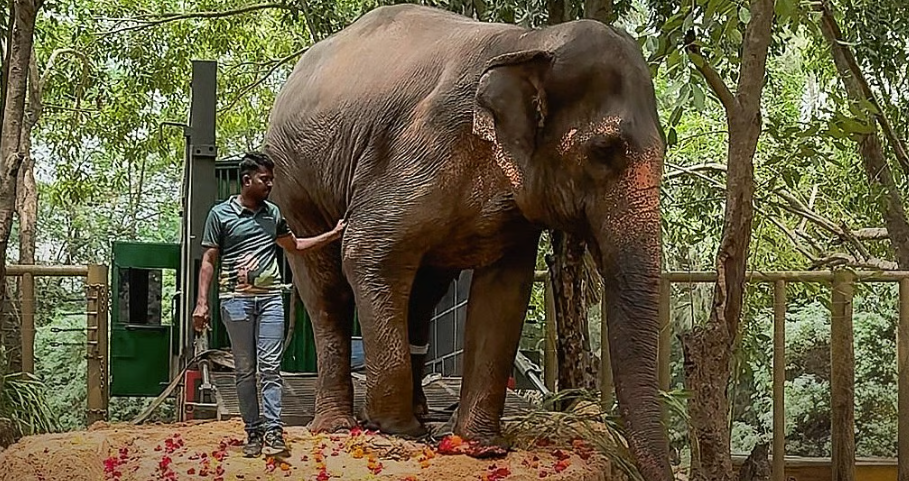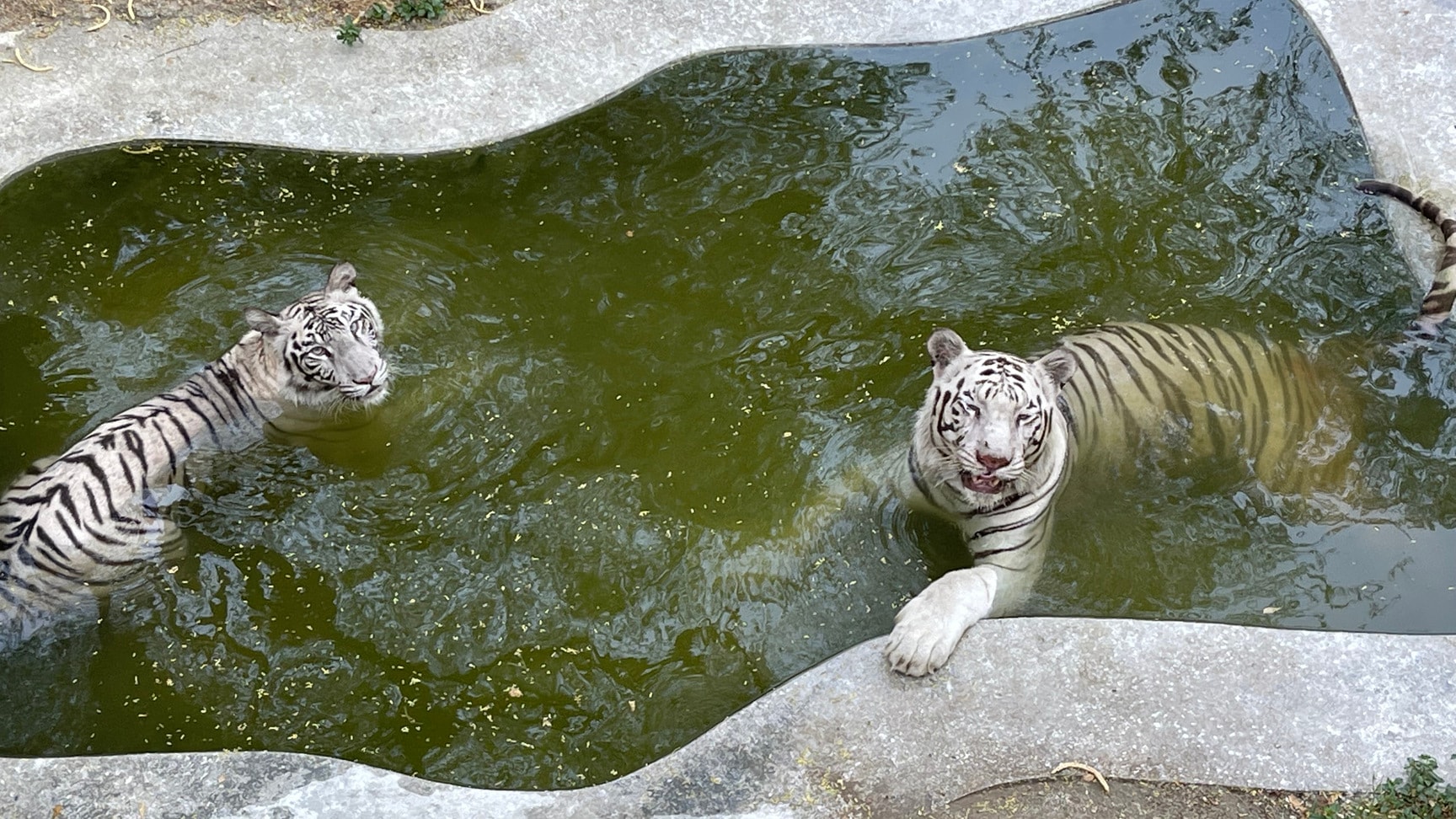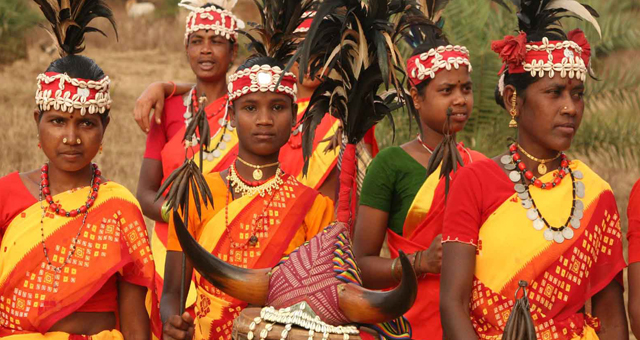India, August 31: All it took was a collective and giant voice for Madhuri, a meeky female elephant, to bring Vantara, , a wildlife rescue and rehabilitation project, under the Supreme Court of India SIT (Special Investigation Team) probe after being under the scanner of international wild life experts and activists for a long time. Located within a 3,500-acre green belt at Motikhavdi village in Jamnagar district, Gujarat, India, Vantara, is an animal rescue, care, and rehabilitation initiative established by the Reliance Foundation, the philanthropic arm of Reliance Industries.
A flagship private wildlife project will not only be probed independently to verify allegations about how animals, particularly elephants and other endangered species were procured and maintained in compliance with India’s wildlife and zoo laws but also if broader environmental and financial norms are being followed in doing so. The Court noted that, while many accusations were media-led and unverified, a neutral fact-finding inquiry was necessary to ensure statutory mandates are met and public confidence is maintained in a high-profile private facility ‘claiming to be a conservation mission‘.
The judicial intervention marks a pivotal moment in the ongoing debate over private wildlife facilities in India, where the intersection of corporate ambition, animal welfare, and legal compliance has sparked widespread scrutiny. Vantara, spanning over 3,000 acres in Jamnagar’s green belt, positions itself as a sanctuary for rescued and rehabilitated animals, boasting advanced veterinary care, expansive enclosures, and international partnerships.

However, the SIT’s formation underscores deeper concerns about transparency, ethical sourcing, and the potential misuse of conservation labels in a country where wildlife protection laws are stringent yet often challenged by powerful interests. As the probe unfolds, it promises to clarify not only Vantara’s operations but also set precedents for how private entities can engage in biodiversity conservation without violating national and international norms.
The Case of Elephant Madhuri and the Wider Debate on Biodiversity
A particularly contentious aspect of the Vantara saga is the relocation of elephant Madhuri, also known as Mahadevi, from Nandani village in Kolhapur, Maharashtra, to Jamnagar, Gujarat. This 36-year-old elephant had resided at the Swastishree Jinsen Bhattarak Pattacharya Mahaswami Sanstha since 1992, but concerns over her health – arthritis, foot rot, and ulcerated wounds, prompted a PETA India complaint in 2023. The Bombay High Court, on July 16, 2024, ordered her rehabilitation based on expert evidence and a High-Powered Committee assessment, a ruling upheld by the Supreme Court. The transfer occurred on July 28, 2025, to Vantara’s Radhe Krishna Temple Elephant Welfare Trust in Jamnagar, prompting protests in Kolhapur and political statements in Mumbai.

On August 5, 2025, Vantara clarified it followed court directives and offered support for a satellite rehabilitation center near Nandani in consultation with Maharashtra authorities. Reports indicate prior irregular movements of Madhuri between Maharashtra and Telangana from 2012 to 2023, leading to a wildlife offence registration in Telangana in January 2023.
Such relocations raise questions about compliance with biodiversity protections, particularly for endangered species like the Asian elephant, listed under Schedule I and CITES Appendix I. Violations can occur when movements bypass required permissions, stressing animals and disrupting social structures, potentially exacerbating population declines driven by habitat loss. The SIT’s probe, announced on August 25, 2025, will examine these aspects, ensuring acquisitions align with conservation goals rather than entrenching captivity without reintroduction strategies.
Human Bonds vs. Wildlife Protection Laws
The controversy surrounding Vantara did not emerge in isolation. It builds on a series of high-profile incidents that highlight the tensions between human compassion, cultural practices, and the rigid framework of wildlife protection laws. One case involves Mohammad Arif and a Sarus crane in Mandhka village, Amethi district, Uttar Pradesh.
In February 2022, Arif rescued an injured Sarus crane, nursing it back to health. The bird, Uttar Pradesh’s state bird and a protected species, formed a remarkable bond with him, following him freely without restraint. This heartwarming story gained viral attention, but on March 21, 2023, forest officials in Amethi intervened, confiscating the crane under the Wildlife (Protection) Act, 1972. The bird was initially transferred to the Samaspur Bird Sanctuary in Raebareli district on March 22, 2023, and later to the Kanpur Zoological Park in Kanpur for de-imprinting and rehabilitation. Despite public sympathy and Arif’s pleas, the law prevailed, emphasizing that private custody of protected wild species is prohibited, even in cases of genuine rescue and bonding, to prevent domestication and ensure species-level protection.

This incident in Amethi is emblematic of broader patterns where personal relationships with animals clash with legal mandates. Similar stories abound across India, where individuals or communities form deep connections with wildlife, only to face enforcement actions. For instance, in various rural districts, farmers or villagers have been separated from rescued birds like peacocks or owls, which are Schedule I species under the Wildlife (Protection) Act.
In one documented case from Uttar Pradesh’s Amethi region itself, local authorities have repeatedly intervened in instances involving protected birds, relocating them to sanctuaries to avoid human imprinting. These cases underscore a fundamental principle: wildlife belongs to the ecosystem, not to individuals, and any custody must align with institutional rehabilitation protocols. The Arif-Sarus episode, unfolding between February 2022 and May 2023 with the bird’s retraining in Kanpur, ignited public debate on whether intent should mitigate strict liability, but enforcement officials maintained that statutory prohibitions are essential to curb trade risks and welfare harms.
Expanding from individual stories to institutional ones, the concept of private zoos or biodiversity parks in India operates within a regulated yet evolving landscape. These facilities, unlike public zoos, are often driven by corporate or personal philanthropy, aiming to contribute to conservation through rescue, breeding, and education.
However, they must obtain recognition from the Central Zoo Authority (CZA) under the Wildlife (Protection) Act, adhering to rules on enclosure standards, veterinary care, and non-commercial use. Vantara, for example, has been granted permissions for importing hundreds of animals, including exchanges with public zoos in India and abroad, such as black panthers from Assam and zebras from Israel.

Yet, critics argue that without dedicated legislation for private entities, loopholes persist, potentially allowing for non-conservation motives like tax benefits or image enhancement. The SIT probe in Jamnagar, initiated on August 25, 2025, directly addresses these gaps by examining compliance with Section 38I, which limits transfers to recognized zoos with prior CZA approval.
Internationally, norms like the Convention on International Trade in Endangered Species (CITES) add layers of scrutiny, requiring permits that ensure trades are sustainable and legal. India, as a CITES signatory, must align domestic actions with these standards, particularly for endangered species like elephants or big cats. Violations could involve improper sourcing, inadequate welfare during transport, or failure to meet non-detriment findings, which assess if exports harm wild populations.
In Vantara’s context, allegations of bulk imports from regions like South Africa have raised flags about potential non-compliance, discussed at CITES meetings as early as November 2023. Such issues extend to biodiversity protection, where private facilities might inadvertently violate endangered species safeguards by creating demand for captive animals, distorting wild populations, or failing to contribute to reintroduction programs. If acquisitions bypass rigorous checks, they risk laundering wildlife under rescue pretexts, undermining global efforts to protect habitats and prevent poaching.
Governance, Transparency, and the Future of Private Conservation in India
Concerns extend to personal bio conservation parks, where private ownership can lead to governance challenges. These facilities may offer habitat benefits but often face scrutiny over transparency in sourcing, limited public access, and potential conflation with non-conservation motives. Environmental impacts, including high water and land use, must be balanced against sequestration gains, with calls for independent audits to verify net positives. For Vantara, the SIT includes reviewing water and carbon credit usage, highlighting how large-scale operations in Jamnagar’s semi-arid climate demand rigorous accounting to avoid offsetting biodiversity protections.
The relationship between Vantara and carbon footprint is multifaceted. Zoological parks can serve as carbon sinks through vegetation and soil storage, as quantified in studies of facilities like the National Zoological Park in New Delhi.

However, in Jamnagar’s industrial context, full life-cycle assessments are needed to account for energy demands, construction emissions, and transport logistics. The SIT’s mandate, from August 25, 2025, emphasizes verifying these claims to ensure they support, not undermine, environmental norms.
Media coverage has also spotlighted transparency issues. Reports on concerns from a South African coalition about large-scale animal exports to Vantara, raised in a March 6, 2025 letter to South Africa’s environment minister, highlighted potential CITES non-compliance discussed in November 2023. These stories, published in March 2025, became unavailable on several Indian portals shortly after, with links returning 404 errors and one updated to a promotional format. The coalition flagged high volumes of leopards, cheetahs, tigers, and lions, questioning suitability for Gujarat’s heat.
Violations of biodiversity and endangered species protections can manifest in several ways, as outlined in legal frameworks. Under the Wildlife (Protection) Act, unauthorized possession or transfer of protected species disrupts ecosystems and incentivizes trade, potentially leading to population declines. CITES violations occur when permits lack non-detriment findings, harming wild stocks. For private facilities, acquiring animals outside recognized channels can create captive populations disconnected from recovery plans, violating conservation mandates by prioritizing collection over rewilding. Environmental mismanagement, like unverified carbon claims, can mask habitat degradation, indirectly violating biodiversity norms by failing to deliver net ecological benefits.
Historically, the protection of tigers at Kanha National Park in Madhya Pradesh represents a shift from exploitation to conservation. In the early 20th century, princely rulers across India hunted tigers as a mark of pride, contributing to their endangerment.

However, the region’s Gond kings and local leaders began advocating for protection, leading to Kanha’s notification as a national park in 1955 and its inclusion in Project Tiger in 1973. This initiative in the Mandla-Balaghat district transformed hunting grounds into protected areas, with anti-poaching measures and habitat management reversing declines. As one historical account states, “the founder, a king of Kanha National Park started protection of tigers when all the kings were hunting the animals and take it as a pride and make these species fall into endangered categories”.

These elements collectively frame the Vantara inquiry as a test case for India’s wildlife governance. The SIT, formed on August 25, 2025, will assess legal compliance, welfare standards, and environmental claims, potentially shaping regulations for private parks nationwide. From Amethi’s Sarus crane in 2022-2023 to Kolhapur’s elephant relocation in 2025, the stories reveal the human costs of strict laws, yet affirm their role in preserving biodiversity. As debates continue, the emphasis remains on transparent, verifiable practices that honor both compassion and conservation imperatives.
Lessons and Questions for the Future
Practical guidance emerges for citizens: upon rescuing wildlife, contact forest departments immediately to ensure lawful rehabilitation, as seen in Uttar Pradesh cases. For institutions, adherence to CZA and CITES through documented transfers is essential. The Kanha model reminds that true protection arises from systemic change, not individual prestige, offering a blueprint for modern facilities to integrate with national goals.
In addressing biodiversity violations, the focus is on systemic safeguards: ensuring acquisitions support wild populations, husbandry meets species needs, and environmental accounting is audited. This holistic approach, underscored by the SIT probe, aims to prevent endangerment while fostering responsible stewardship across India’s diverse landscapes.
Yet, as India reflects on its conservation journey from the unchecked hunting and poaching by kings that pushed species like tigers to the brink of endangerment, to the landmark initiatives under Prime Minister Indira Gandhi, who championed the Wildlife (Protection) Act in 1972 and launched Project Tiger in 1973, key questions arise about the role of modern biological parks.
How can these facilities honour the hard-won progress of decades, ensuring they build on Gandhi’s legacy of systemic protection rather than risk regressing to privatized exploitation? What safeguards are needed to prevent the allure of large-scale private parks from inadvertently fueling demand for endangered species, much like royal hunts once did? And in an era of climate challenges, how do we verify that such parks contribute genuinely to biodiversity without repeating historical patterns of overuse and depletion that Gandhi’s laws sought to reverse? These interrogatives invite a deeper examination of whether today’s conservation efforts truly advance the ecological equilibrium that took generations to establish.

